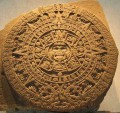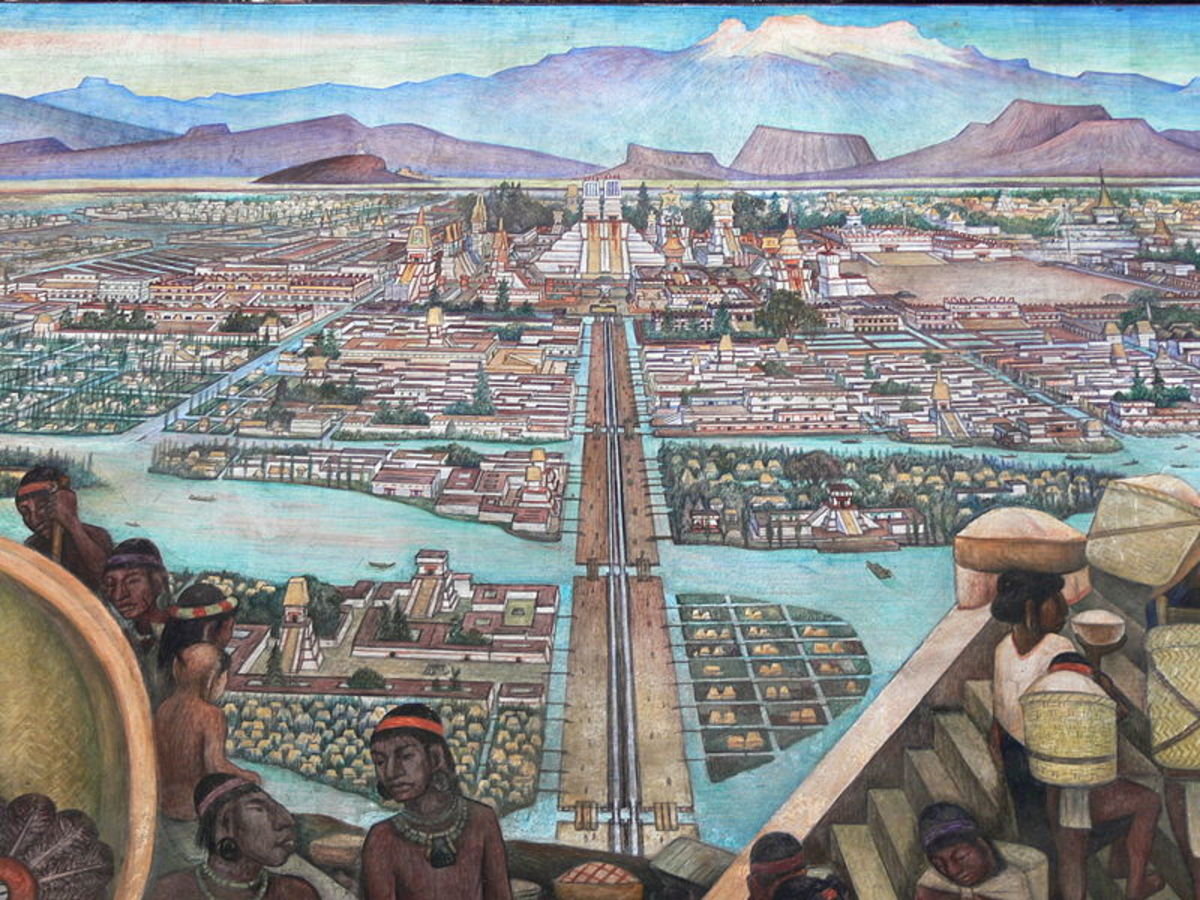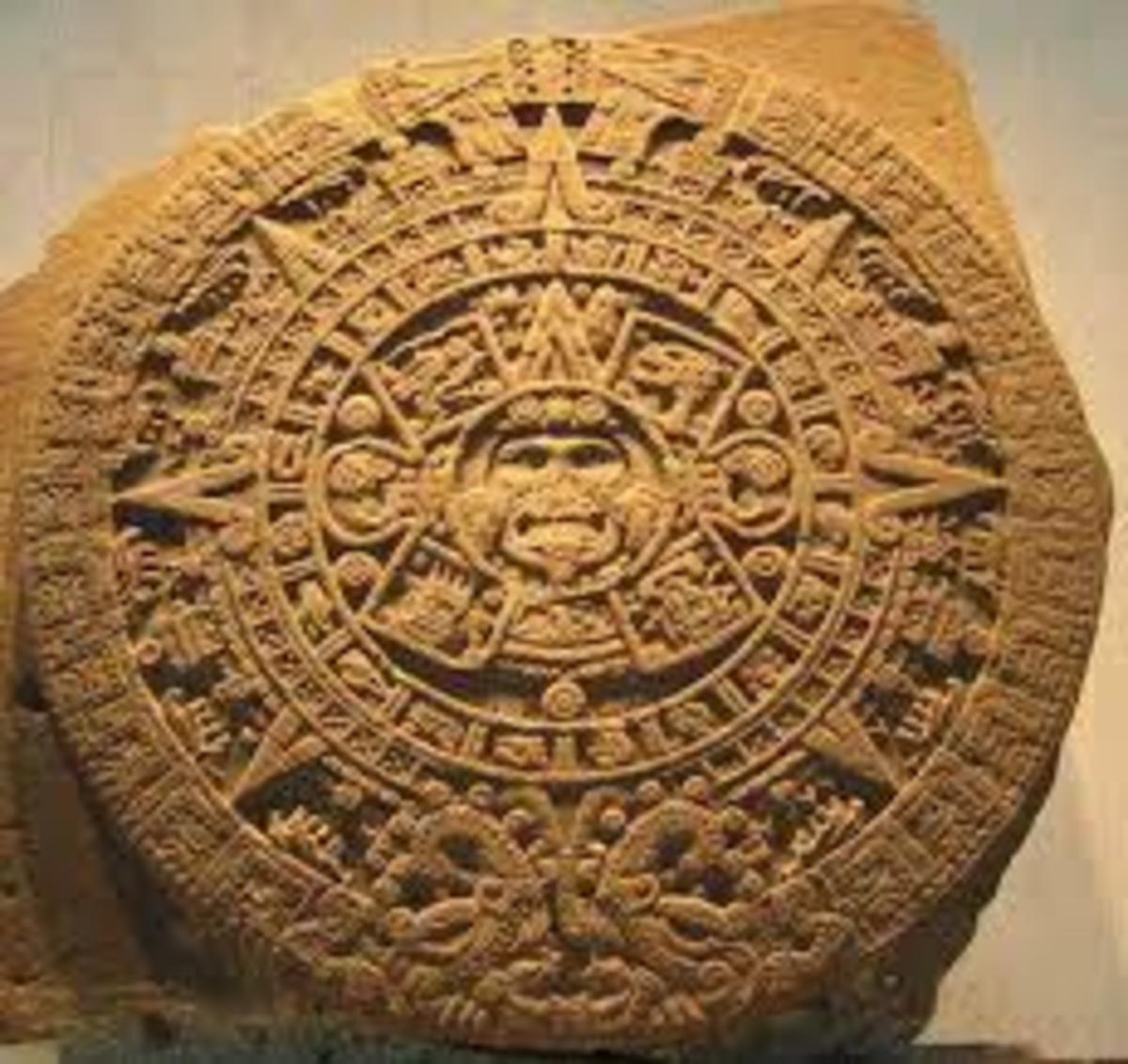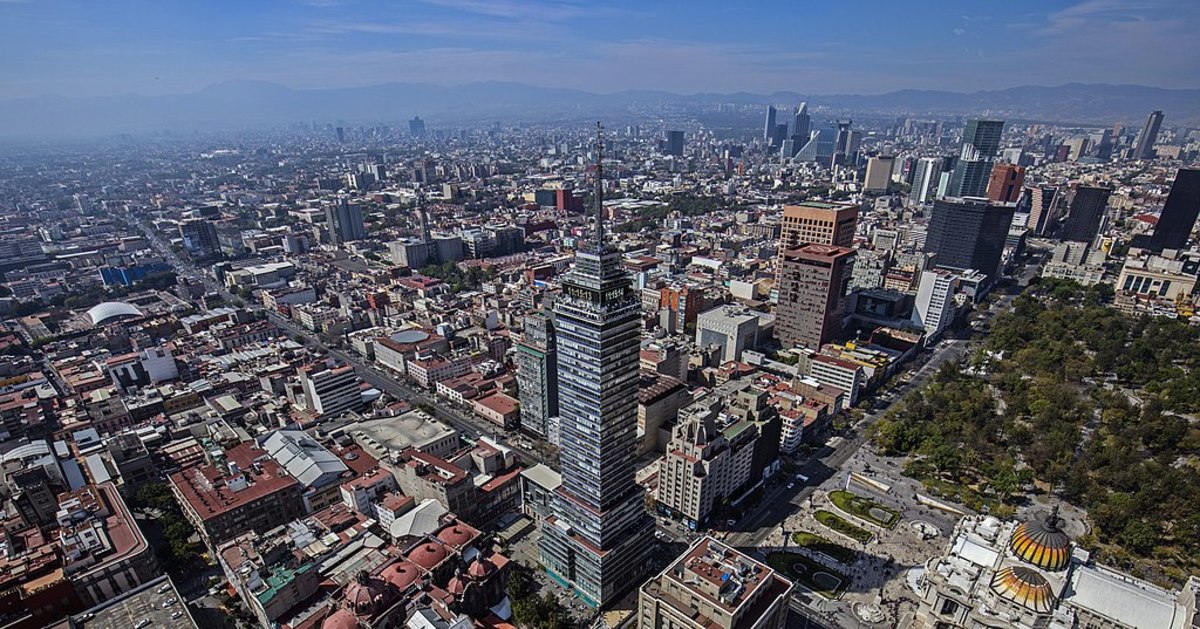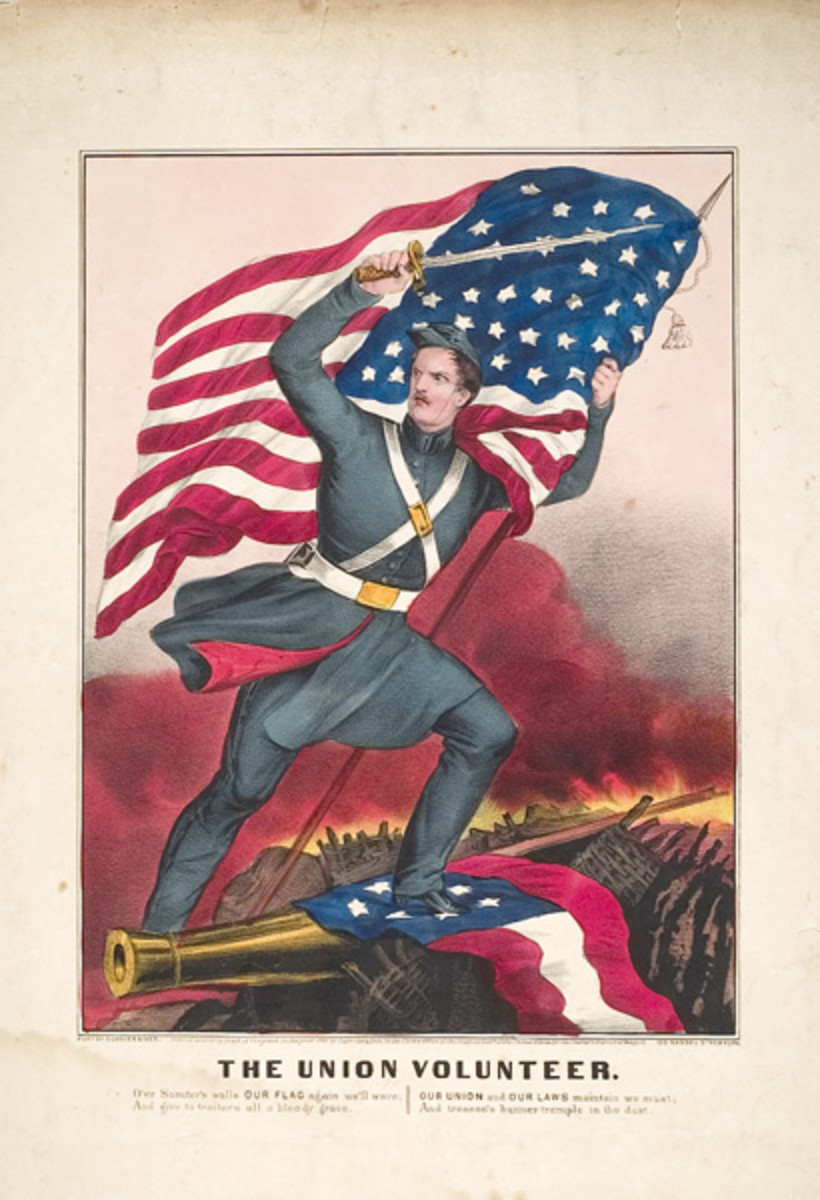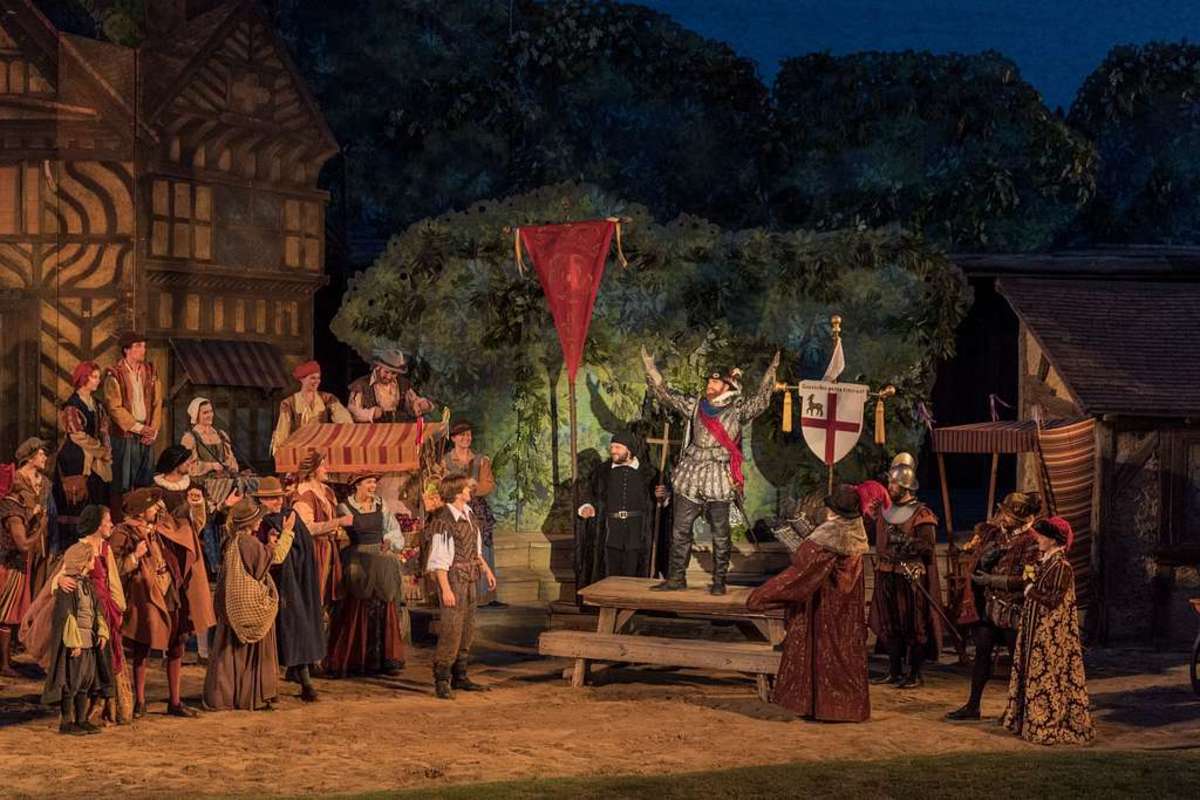- HubPages»
- Education and Science»
- History & Archaeology»
- History of the Americas
Exploring the Softer Side of the Aztecs, Part Two
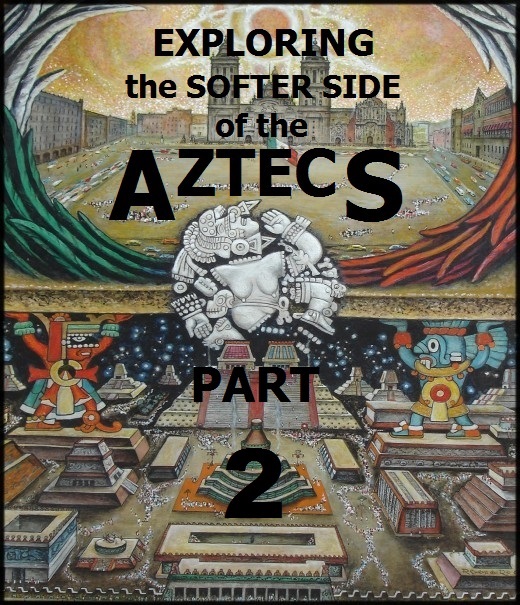
Welcome to the second part of my two-part series exploring some of the lesser known aspects of Aztec culture. I decided to write on this subject because in school I never learned much about the Aztecs beyond their religious human sacrifices and their defeat by Cortés and European diseases. If you missed Part One or wish to revisit that article before reading this one, you can find it here:
- Exploring the Softer Side of the Aztecs, Part One
Part One explores their origins, city planning, and agriculture.
Otherwise, please read on to learn more about the Aztecs through their social structure, laws, educational system, and arts.
Aztec Social Structure
There were three strata of Aztec society. At the top were the elite of the noble class which included the ruler, military leaders, and courtly politicians and priests. In the middle stratum were the commoners whose elite were the wealthy merchants. In the bottom strata were the slaves. While the Aztec social order was rigidly observed, there were real opportunities for upward mobility through education, marriage, hard work, athletic and artistic talent, and military service.
Slavery, in the Aztec sense, was in many ways closer to indentured servitude than to true slavery in the European sense. A slave who bested his master running by making it to the Palace before getting caught was set free immediately. Anyone in the crowd who dared to interfere in this public spectacle to aid either the runner or his owner were sentenced to death.
Slaves could also purchase their own freedom or fulfill the terms of their contract if they had sold themselves into slavery to pay off a debt. Slaves were generally well-treated and had rights in the eyes of society. They could, for example, marry and have a spouse and children who were not slaves. They could escape slavery by marrying their own owner. Mistreatment of a slave, whether by the owner or by another party, was punishable by death.
The basic unit of Aztec society was the family. Family in the most basic sense meant husband, wife, and children, but could also refer to ancestors, grandparents, in-laws, cousins, slaves, and even working animals, livestock, belongings, houses and other structures. An extended family unit known as the Calpulli or "big house" was the Aztec equivalent of a political district, labor union, and merchants' guild, all rolled into one. It was responsible for maintaining excellence of production, protecting alliances, fulfilling contracts, and passing along skills, innovations, and secret knowledge within a craft to future generations. It was a source of political power and influence that was grander than the sum of its parts.
Aztec Law and Order
The Aztecs had a legal code and courts of law. There were no prisons. However, a law-breaker might be placed into a wooden cage and watched prior to his trial, to keep him from escaping Aztec justice. Aztec law took into consideration the circumstances surrounding a crime as well as the person who commited it.
For example, a child under ten was considered too innocent and ignorant to be capable of wrongdoing. A nine year old found to be drunk and disorderly in the streets would be forgiven without further consequence. A person over 70 would be well within their rights to drink when, where, and as much as he or she pleased. A drunk over seventy would be released. A very poor person or slave over ten and under 70 would be warned and possibly shamed by having their head shaved upon a first offense. They would likely be killed if it happened a second time. A wealthy official who was drunk and disorderly in the streets would be put to death, probably in a horrible public spectacle as a warning to others of his station.
The Aztecs expected higher standards of behavior from their nobles and officials. These people were better educated and well knew the laws and what was expected of them. They enjoyed greater privileges but also shouldered greater responsibilities. The penalties for law-breaking were far more severe for the elite. State officials who were found guilty of corruption or negligence in their duties were considered the worst kind of criminals and were punished mercilessly before being put to death.
The fashion police were alive and well amongst the Aztecs. Wearing certain materials or items of clothing was a privilege one had to earn. The way a person dressed indentified them like a uniform. Dressing like a person of higher rank was viewed as a form of stealing as well as impersonation, both of which were crimes against Aztec society. Offenders to the prescribed dress code usually had their houses knocked down upon a first offense. A repeat offender would be executed.
Black magic was also highly illegal. Certain people in Aztec society possessed special knowledge of spells, herbs, potions, and rituals. Priests, healers, and midwives used such sacred knowledge for the benefit of all Aztec society. Practicing evil magic, such as poisoning or appealing to the gods to curse another person, was a serious crime. Usually offenders were executed.
Any actions that were considered destabilizing to family life were not tolerated. Adultery, domestic violence, and homosexuality were considered capital crimes that undermined the Aztec social and economic order. Adulterers were treated especially harshly, usually burned, strangled, or stoned to death.
Many farmers, hunters, and fishermen spent most of their lives outside of the cities. For this reason, there were specific laws that governed appropriate behavior in the wilderness. Lighting a fire in the woods without special permission, cutting down trees, moving boundary-markers, stealing from another's traps or crops might have resulted in fines, restitution, enslavement, or death, depending on the guilty party's age and rank and the consequences of the specific criminal act.
Aztec Education
The Aztecs were one of the first societies in the world to mandate education for everyone, whether male or female, rich or poor, noble or commoner. Even a slave child was rigorously taught at home then sent to public school, too.
It was considered the same-sex parent's official duty to educate a child at home until their early teens when they were ready for school. If no same-sex parent was available, this duty might have fallen to a relative or to a master or another slave in the case of a slave child.
From about four, Aztec children started learning about the moral ideals of Aztec society. They learned the "old sayings" which exalted the virtues of obedience, politeness, respect, honesty, energy, moderation, and modesty. Children learned these values while working hard helping with the daily chores. Parents warned against gambling, theft, uncleanliness, gossiping, laziness, and drinking to excess while at the same time teaching skills like fishing and farming for boys or spinning thread and making tortillas for girls. Periodically, each child over four was tested in the local temple to make certain their responsible parent was a good teacher and the child's education was on track.
If after the age of ten, children did not behave properly, they were punished by their responsible parent. One type of punishment unruly children suffered was enduring the smoke of a chili pepper fire until their eyes and noses watered. They also might be punished by having their arms pierced with the spines of the maguey cactus. Through harsh punishment, parents enforced the lessons that would keep their children safe and successful later in life. If a child was considered unable to reform, the parent could take the child to court. If the court agreed that the child was incorrigible, it might allow the parent to sell the child into slavery.
In the teen years, usually by 15 but often earlier, every child in the Aztec empire had to attend school. At the beginning, there was no coed education or contact between nobles and commoners or slaves at school. Everyone had their own school, which was both class and gender specific.
Commoners and slaves started at a telpuchcalli, a sort of public high school. The best and brightest students then were moved into calmecac. The children of nobles started at a calmecac which was a bit like an elite private school and ivy league college all rolled into one. Whichever school a student attended, education was tough and intensive. School meant long, hard days of learning with harsh punishments for slacking.
All schools taught proper citizenship. It was important to learn what was expected of an adult Aztec under the law because a punishment from the state could mean automatic death. All students also learned traditional songs and dances that were part of public religious ceremonies.
Boys at telpuchcalli were taught basic occupational skills, the art of warfare, basic history and math, and a specific trade or craft. Girls were trained in good motherhood, cooking, textile production, and religion, as well as a specific craft.
After the telpuchcalli, all boys went on to college, most at a cuicacalli for military training and a talented few at a calmecac for professional training. Most girls got married and started their own families after telpuchcalli. The ones with special talents went on to a calmecac for girls. Some of these girls probably never married, instead becoming full-time priestesses, midwives, or entertainers.
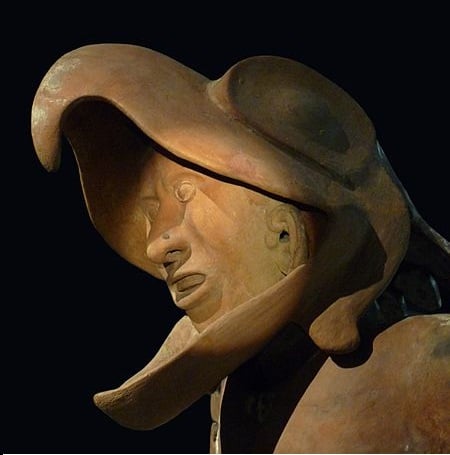
Cuicacalli was military college for male commoners and slaves. If they did well and survived the school training, they would become warriors and be revered by all in the society. If they survived and washed out, they returned to their old lives whether slavery or fishing, hunting, farming, or the family business. Becoming a warrior was difficult, competitive, and dangerous but was by far the fastest way to move up into the elite ranks of Aztec society.
Calmecac schools were high schools/colleges mainly for the nobles but also for most talented students from any background. High school students there received general educations covering basic astronomy, statesmanship, theology, medicine, and poetry. College students received advanced training in specialized professions such as healing and engineering. Even the poorest commoners and slave children could be moved into these special advanced classes if they showed enough talent and initiative.
The Aztecs recognized the need for a smart, well-trained work force. While most professionals were pulled from the ranks of the nobility, the Aztecs believed in giving everyone a chance to move up in the world. Being especially hardworking, quick-minded, and plucky was seen as being worthy of that chance.
There were also three other opportunities for those with specific talents. Men and women were chosen as entertainers for the house of song and dance. Men were recruited as players for the ball court. Both these occupations held high status.
Both men and women were chosen as priests and priestesses serving certain gods. Priests were revered. The status of priestesses in Aztec society is not entirely understood.
Some anthropologists believe they held as much, or nearly, the status and influence of their male counterparts. Some think the position of priestess was a more temporary job that preceded a timely sacrifice. It is possible that fate awaited both priests and priestesses, and that the matter of when was dependent on court politics.
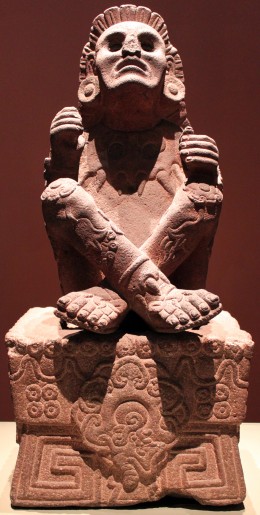
Aztec Arts and Associated Technologies
Only in recent years have we begun to understand just how clever, capable, and technologically advanced the Aztec craftspeople and artisans truly were. For example, until recently we believed that Aztecs used rubber mainly for novelties like children's toys. We thought that until vulcanization was invented, rubber from the rubber tree plant was fairly worthless to anyone not in the business of selling chewing gum.
What we didn't know, then, was that the Aztec had developed their own chemical techniques for making rubber hard, durable, and versatile via the process of adding enzymes from the morning glory plant in differing ratios to rubber tree sap producing many grades of rubber with uniquely different properties. One ratio made rubber balls incredibly hard and dense for use in a fast-paced, brutal sport. Another made soft, flexible, waterproof outerwear and boots, useful to fishermen, hunters, and farmers.
The Aztec rubber industry produced rubber bands. These were used to make sling shots, spears, and arrows. Rubber soles made sandals more comfortable and luxurious for the nobles. Rubber string was used like elastic in clothing.
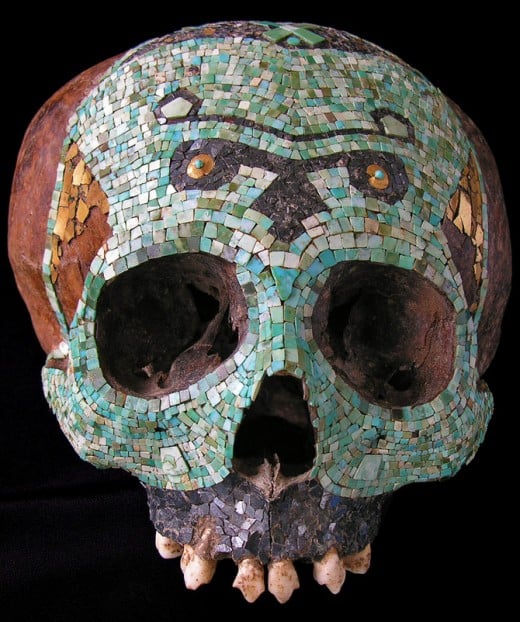
Likewise, Aztec metal workers were far more technologically advanced than anyone first suspected. When Cortés landed, the Aztec gave him gifts as was their custom when meeting the leader of a new tribe for the first time. Amongst the trinkets were fabulous golden objects that convinced the Spaniards that the Aztecs possessed wealth beyond measure. These golden objects were assumed to be pure gold, of course. The Aztecs did not carry iron weaponry. It was painfully obvious to the Spaniards that the Aztecs simply did not know the advanced metallurgical techniques required to produce alloys needed for alloying gold or producing European style weapons.
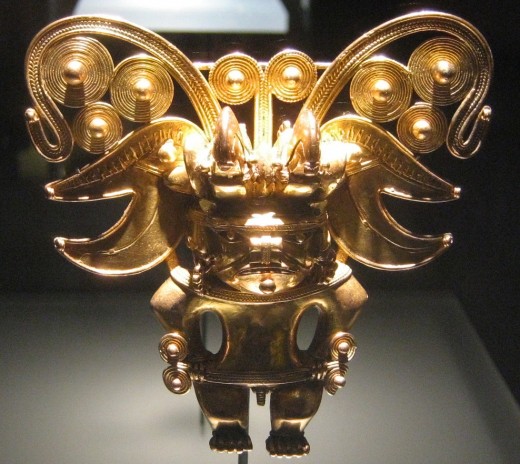
It turns out that the Aztecs and many of their neighbors were extremely skillful at metallurgy as well as metalworking. They knew that obsidian made better blades and preferred it aesthetically for use in clubs. To the Aztecs, gold was teocuitlatl which literally means "yellow excrement of the gods." Gold was fine for decorative uses such as gold leaf or ceremonial jewelry but was too soft for making anything important like weaponry.
Gold was simply not considered as valuable to the Aztecs as say feathers which decorated the cloaks or their rulers and priests or cacao beans which they used like money. Still, most of the golden-hued objects that the Spaniards saw were made of an alloy of mainly copper and other metals like silver, and contained only a small percentage of genuine gold. This copper and gold alloy they later called tumbaga.
The metalworkers of the area made tumbaga objects, by casting, stamping, hammering, or other metalworking technique. Then they treated their creations with solutions of citric acid that ate away the outer particles of copper. Then, if silver was part of the alloy, the object was submerged in a solution of something to eat away the silver particles on the surface (probably sodium chloride and ferric sulfate.) In the end, only the gold particles remained, leaving a bright but slightly pitted golden surface which would neither patina like copper nor tarnish like silver.
Check out Aztec influence in contemporary Mexican street art!
Do you think the Aztecs were any less civilized than their European invaders?
Conclusions
The more one learns about the Aztecs the more impossible it becomes to dismiss them as savage monsters. They were not simply aberrations who lived to spill the blood of their enemies to appease demanding gods. They were not so different from others in the region who also practiced human sacrifice albeit on a smaller scale. They aren't even all that different from Christian crusaders, the Spanish Inquisition, modern day jihadists, or from any other group of people who are willing to kill in the name of religion.
It is a mistake to let their shortcomings blind us to their accomplishments and to all they still can teach us. They are a testament to how hardships and seemingly impossible challenges can be overcome with vision, will, unity, and great effort. Few societies have lived more attuned with nature and their immediate environment. Virtually nothing in Tenochtitlan went to waste, in stark contrast to the mountains of garbage constantly generated by contemporary cities.
If we can learn nothing else, let the Aztecs serve us as a cautionary tale. They can remind us that living in a constant state of fear (from wrathful gods, terrorism, the end of the world, or from anything else, really) can lead an advanced people to commit otherwise unimaginable atrocities. Let's remember them, conquer our fears, and take a step forward.


